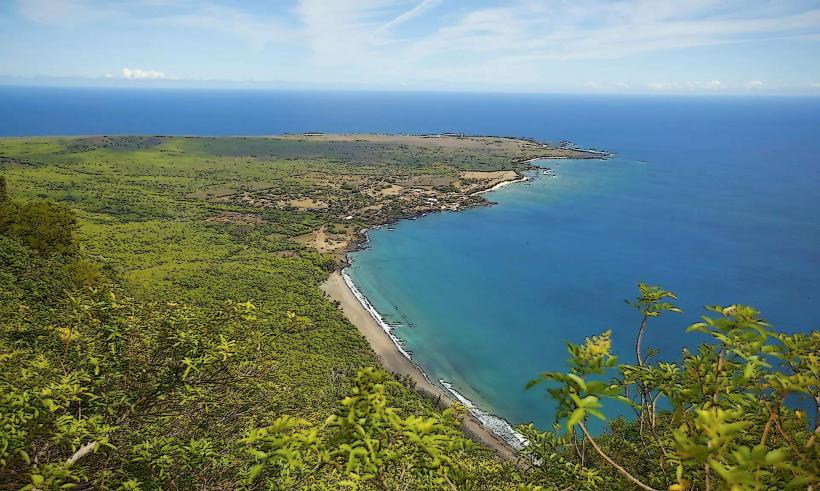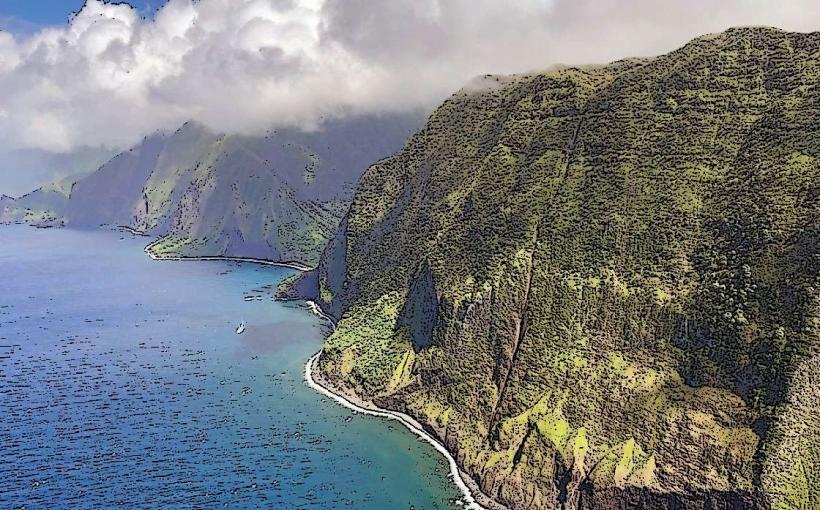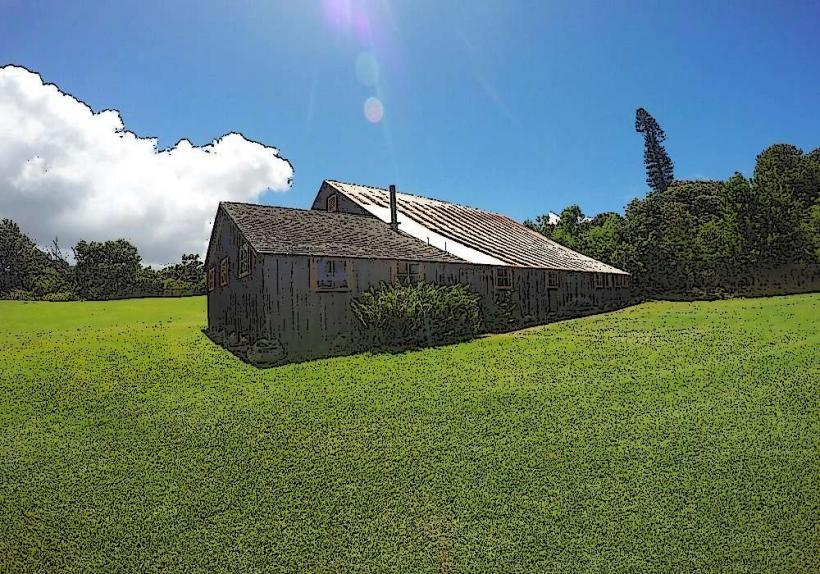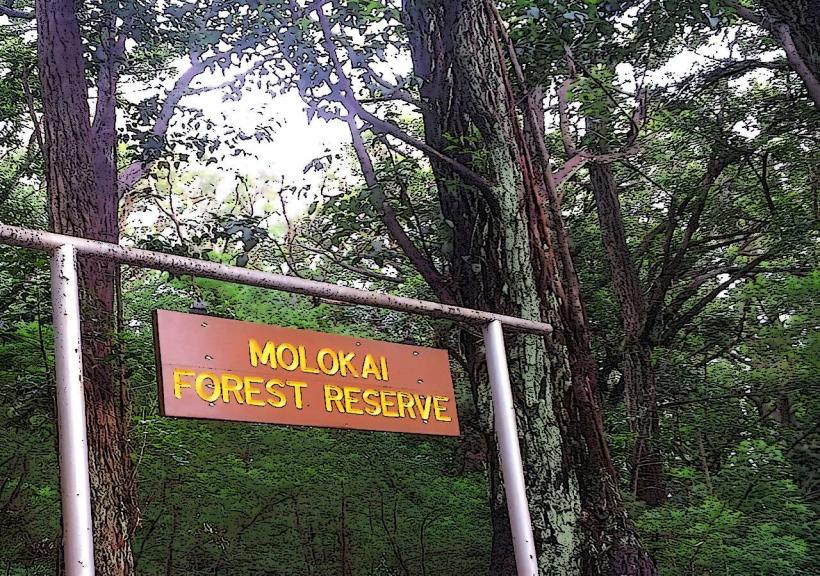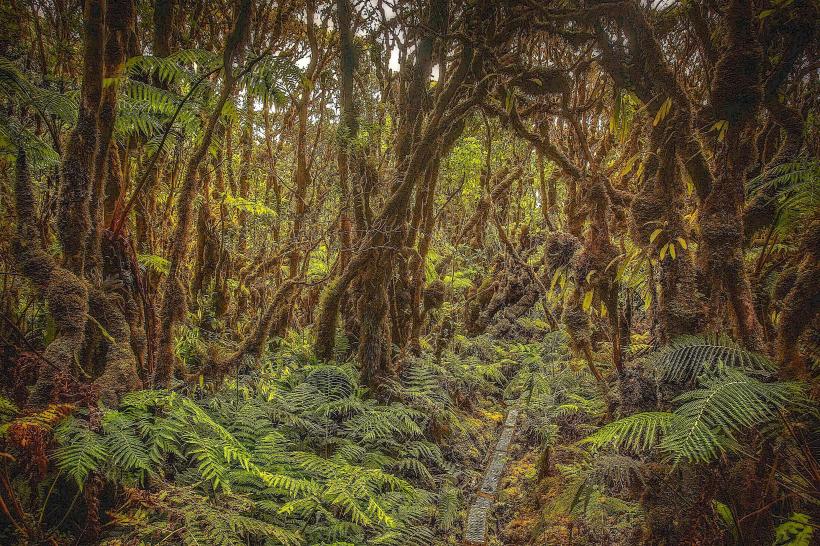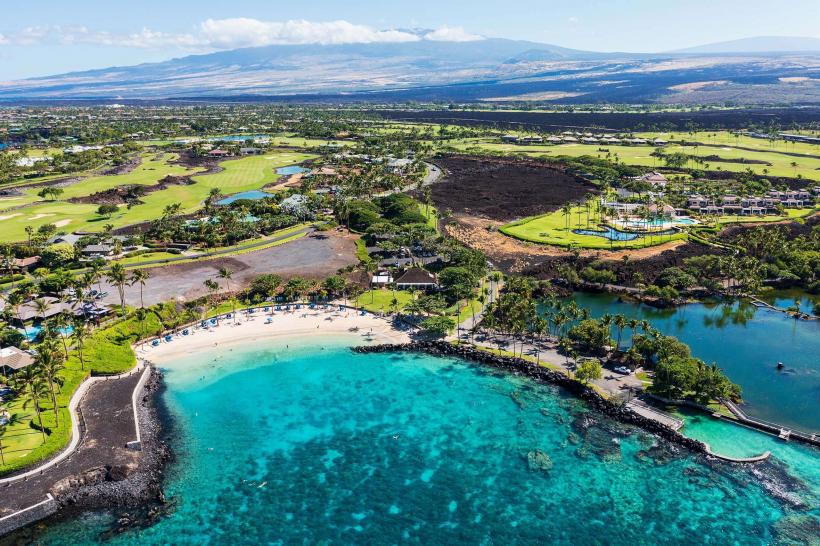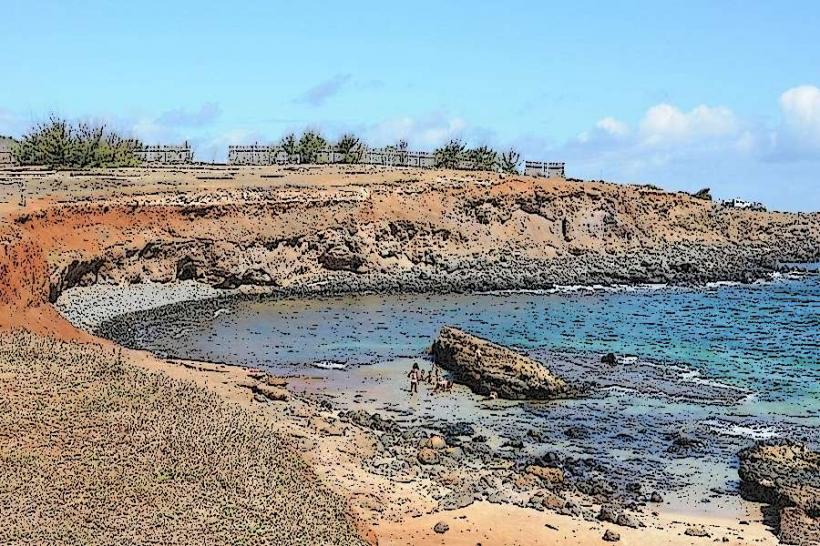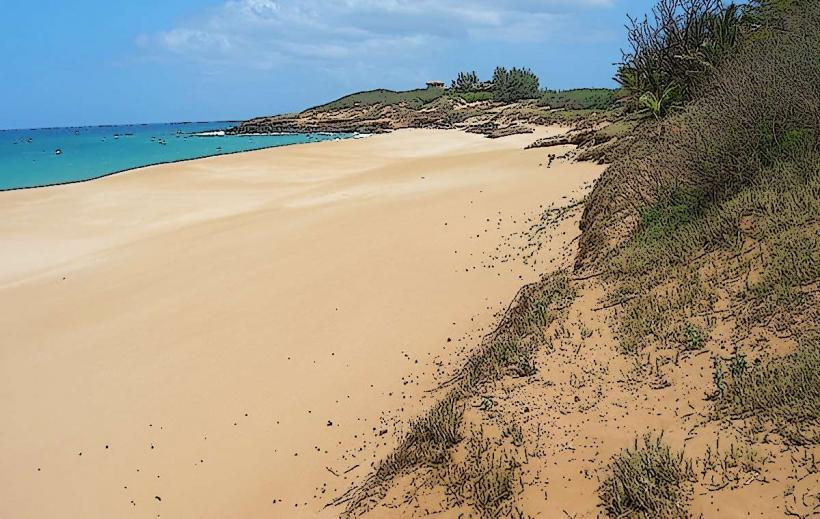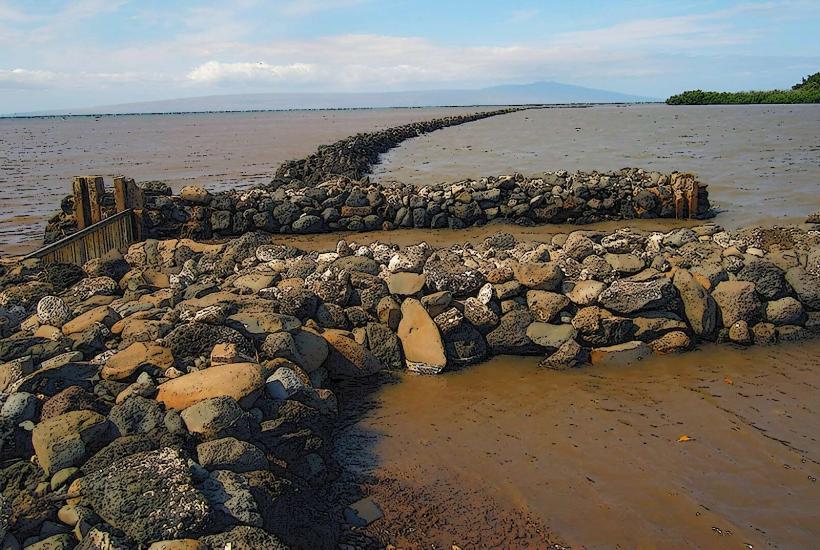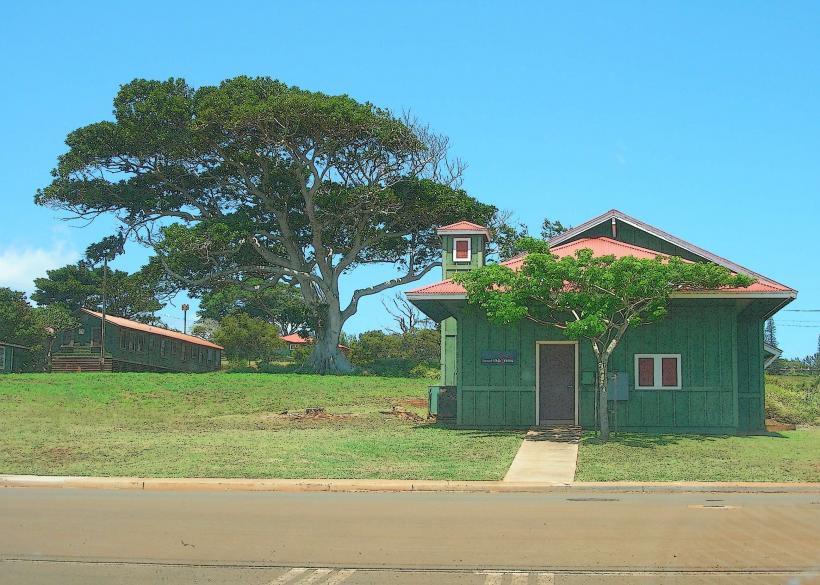Information
Landmark: Halawa BayCity: Molokai
Country: USA Hawaii
Continent: North America
Halawa Bay is a beautiful and serene bay located on the eastern coast of Moloka'i, Hawaii. Known for its lush surroundings, tranquil waters, and rich cultural and historical significance, Halawa Bay is one of the island’s most picturesque and remote destinations. It is a place that combines natural beauty with deep cultural heritage, offering visitors an opportunity to experience both Hawaiian history and stunning landscapes.
Key Features and Attractions:
1. Scenic Beauty and Landscape:
- Halawa Bay is set in a stunning valley surrounded by steep, verdant cliffs that rise dramatically from the shoreline. The bay's pristine waters are framed by lush tropical foliage and lush mountain slopes, creating a peaceful and picturesque environment.
- The bay itself is calm and inviting, with clear turquoise waters perfect for swimming and snorkeling. The surrounding cliffs and lush vegetation enhance the bay's natural beauty, making it a popular destination for nature lovers and photographers.
- The surrounding landscape includes waterfalls that cascade down from the cliffs, especially after rainfall, adding to the bay's scenic charm.
2. Halawa Bay Beach:
- The beach at Halawa Bay is made up of fine, light-colored sand, providing a perfect setting for a relaxing day by the ocean. The beach is less crowded than many others in Hawaii, offering visitors a more tranquil experience. It is ideal for swimming, picnicking, and simply enjoying the beauty of nature.
- The bay is protected by a natural reef, which helps maintain calm waters and provides a safe environment for snorkeling and kayaking. However, the waters can sometimes be rough depending on the time of year, so it's important to check the conditions before swimming.
3. Cultural and Historical Significance:
- Halawa Bay is one of Moloka’i's most significant cultural sites, with a long history that dates back to ancient Hawaiian times. The area is deeply connected to the traditions of the island and was historically a center for farming, fishing, and religious practices.
- The bay’s location made it an important site for Hawaiian settlers, as the fertile land around the bay supported the growth of kalo (taro) and other crops, and the waters were rich with fish. Halawa Bay is often associated with the story of the Polynesian migration, as it is thought to have been one of the early landing sites of the first Polynesians arriving in Hawaii.
- The Halawa Valley has been inhabited for over 1,500 years, and the area is rich in archaeological sites, including ancient Hawaiian temples (heiau), taro fields, and remnants of traditional Hawaiian villages.
- Visitors to the bay can learn about its history through interpretive signs and cultural tours. The stories of Hawaiian gods, legends of Hawaiian chiefs, and the history of the first settlers are integral to the area’s identity.
4. Halawa Bay Waterfalls:
- The Halawa Bay Waterfalls, located in the valley above the bay, are one of the highlights of the area. These beautiful waterfalls cascade down the cliffs into the lush valley below, and they can be reached by hiking through the valley.
- There are two main waterfalls in Halawa Bay, known as the Mooula Falls and the Hanawi Falls, both of which provide a dramatic and serene backdrop to the valley. Visitors can take guided hikes to these waterfalls, where they will experience the raw beauty of the Hawaiian wilderness. The hikes are not particularly challenging but do offer a chance to explore the tropical forest, enjoy the valley’s views, and learn about the region’s natural history.
5. Access and Transportation:
- Halawa Bay is located on the eastern side of Moloka'i, and it is somewhat remote, which helps keep the area peaceful and relatively untouched. The bay can be reached via Highway 450, which runs through the lush Halawa Valley. Visitors will need to drive through the valley to reach the bay.
- The drive to Halawa Bay offers scenic views of the coastline and mountains, with lush tropical foliage lining the road. The winding road through the valley provides visitors with a unique perspective on the island’s natural beauty.
- Parking is available near the beach, but be mindful that the road leading to the bay can be narrow and winding. Some visitors may choose to take guided tours that provide transportation and offer insights into the history and culture of the area.
6. Halawa Bay Cultural Tours:
- One of the best ways to experience Halawa Bay is through a cultural tour. Native Hawaiian guides offer tours of the valley, providing rich storytelling and sharing the traditional knowledge of the area’s history, flora, and fauna.
- These tours may include a visit to the Halawa Valley Waterfalls, a walk through the ancient taro fields, and a chance to learn about the traditional practices of the Hawaiian people. Guides often explain the significance of the valley and the important role it played in Hawaiian culture, including the cultural practices tied to the land and sea.
- Some tours also include opportunities to learn about Hawaiian navigation, ancient farming techniques, and the spiritual significance of the area.
7. Snorkeling and Marine Life:
- The waters of Halawa Bay are home to an array of marine life, including colorful tropical fish, sea turtles, and occasionally manta rays. The bay’s natural reef system helps support a diverse marine ecosystem, making it a great spot for snorkeling and exploring underwater life.
- The calm waters near the shore are especially ideal for beginner snorkelers, though more experienced snorkelers can venture further out to explore deeper waters.
- Visitors should be mindful of the ocean conditions, as strong currents can occasionally affect the bay, especially during the winter months when the ocean can be rougher.
8. Molokai's Unique Atmosphere:
- Moloka'i is known for its laid-back and rural atmosphere, and Halawa Bay is one of the island’s most tranquil locations. The area is far less developed than other Hawaiian islands, and the absence of large resorts or hotels keeps the bay feeling peaceful and uncrowded. This makes Halawa Bay an ideal place for visitors seeking to experience a quieter, more authentic Hawaiian environment.
- Halawa Bay remains largely untouched by modern tourism and development, which preserves the natural beauty of the area and gives visitors the chance to connect with the island’s culture and history.
9. Best Time to Visit:
- The best time to visit Halawa Bay is during the dry season from April to October, when the weather is more predictable, and the waters are calmer. However, the bay is beautiful year-round, and the rainy season (November to March) brings lush greenery and vibrant landscapes, though there may be more rainfall and rougher waters during this time.
- If you’re planning to take a hike to the waterfalls, the dry season offers better trail conditions, though it’s still important to wear sturdy shoes and be prepared for a humid tropical climate.
10. Camping:
- For those seeking a more immersive experience, camping is available at Halawa Bay. Camping along the beach provides a unique opportunity to enjoy the natural surroundings and sounds of the ocean at night. The campground is small and typically requires a permit, which can be obtained in advance.
Conclusion:
Halawa Bay is a hidden gem on the island of Moloka'i, offering a mix of stunning natural beauty, cultural significance, and outdoor adventure. Whether you're visiting for the beach, the waterfalls, the snorkeling, or the cultural tours, Halawa Bay provides a peaceful and authentic Hawaiian experience. The tranquil environment, combined with the rich history and lush landscapes, makes Halawa Bay a memorable destination for those looking to connect with the true essence of Moloka'i.

